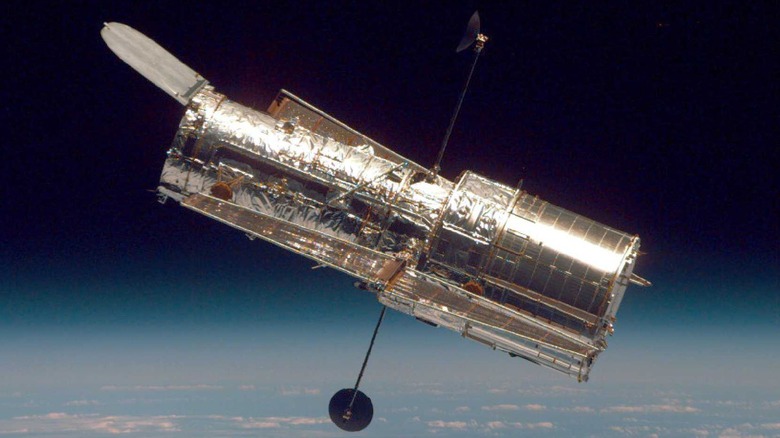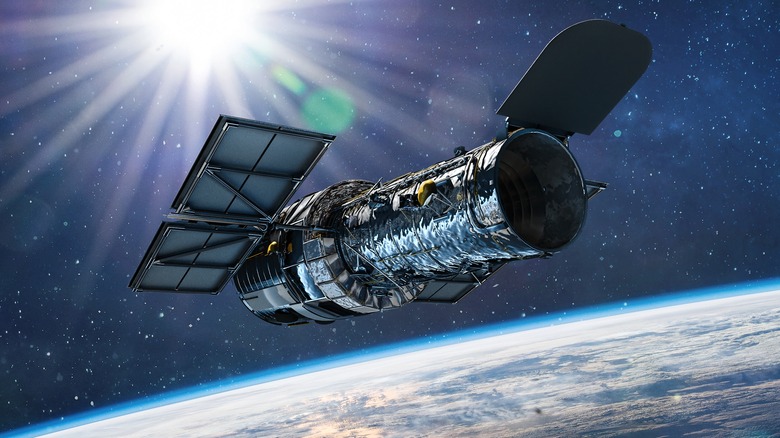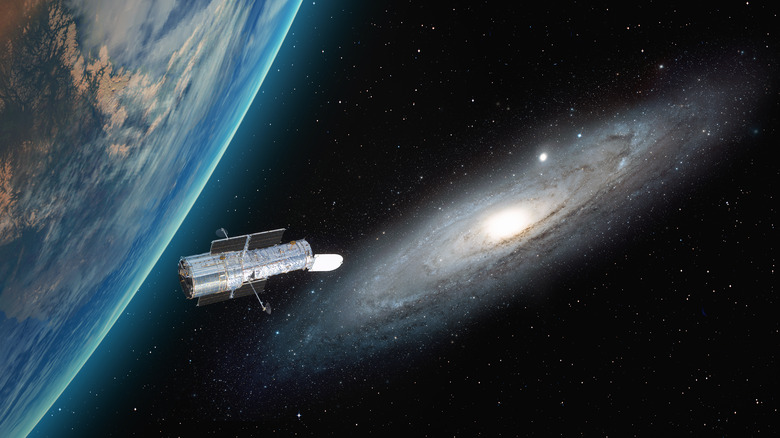Where Is The Hubble Telescope Right Now?
Humans have been looking to the stars for as long as we've existed. Those shining dots in the night sky have been the inspiration for myths across cultures, guided sailors and travelers to safety, and provided light in the dark. But it took some time for people to be able to understand the science behind them, and even longer for us to be able to get a closer look.
Much of what we now know about the universe that we live in is the result of the work of the orbiting Hubble Telescope — what NASA calls a space-based observatory — which has been collecting data on our galaxy for the past three decades, as NASA tells us. The telescope isn't the first one to be launched in space, but according to NASA, it's provided more than 1.5 million observations from our solar system and provided materials for thousands of scientists to begin research on outer space. The telescope has faced some technical difficulties during its service (per Science Alert), but it's still out in the sky today.
How does it work?
Much like the basic telescopes you might have used as a kid, the Hubble Telescope operates primarily using mirrors (via NASA). A large primary mirror reflects light from the sky to a smaller mirror. That mirror then directs the light to recording instruments inside the telescope, like a camera and spectrograph, which record things like radiation levels and sound waves. Finally, the information is directed to detectors for analysis. With all that data, scientists can figure out more about outer space than they ever could from the Earth's surface.
Unlike your standard telescope, though, the Hubble Telescope is designed to take in all of that data across extreme distances. The telescope can view galaxies too far away to possibly travel to, with incredible detail and resolution (via NASA). The huge telescope is powered by solar arrays, which makes a lot of sense when you think about how much sunlight it must get orbiting around the Earth.
Where is it now?
The Hubble Telescope isn't as far as you might think. The telescope doesn't have to travel much to collect images of the solar system, according to NASA, so it's maintaining a pretty steady orbit around the Earth. Right now, it's stationed about 340 miles above the Earth's surface. At its current speed, it orbits the planet about 15 times a day.
In order to get the clearest readings of what's happening in the solar system, says NASA, the Hubble Telescope needs to be stationed above the Earth's atmosphere. By sustaining a consistent orbit, the telescope can keep going back to look at things a second, third or 15th time to help scientists better understand what it's documenting.
The Hubble Telescope isn't alone in its work. Other telescopes launched by NASA (per Scientific American), like the James Webb Telescope (launched last Christmas, per Yahoo! News), help us get a better understanding of outer space. But Hubble remains one of the most famous for the progress it's made in documenting space, a mission which it continues to do today.


